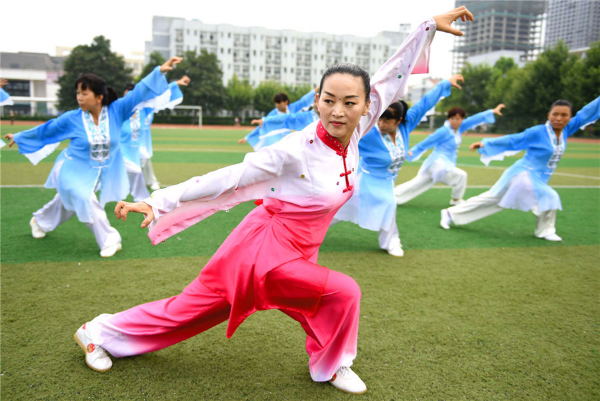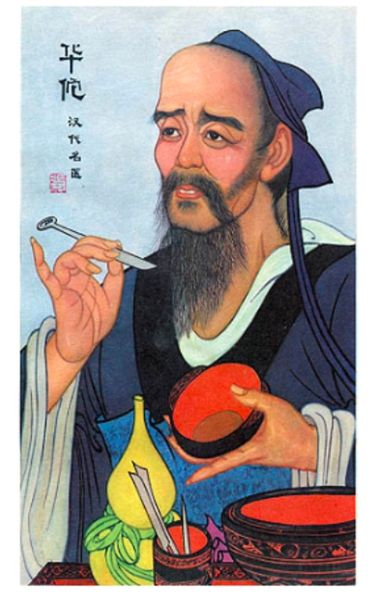Try classical indoor exercise: Wu Qin Xi
By Zhu Linyong | (chinadaily.com.cn)| Updated : 2020-03-18
Print Print
Chen Jing, an officially recognized inheritor of the Wu Qin Xi exercise, performs the tiger stance with local residents in a park in Bozhou, East China's Anhui province, on Sept 26, 2017. [Photo by Liu Qinli/asianewsphoto.com]
Editor's note:
Exercising regularly is an essential part of a healthy lifestyle. But the outbreak of the novel coronavirus has kept millions of people from partaking in outdoor activities since late January. Indoor workouts have since become an important way to stay healthy and protect against illness, especially at a time like this.
Here's a look at one of the most popular traditional Chinese indoor exercises people have been practicing for centuries, one which has proven to be highly effective in enhancing health and fitness.
Wu Qin Xi
If you are a fitness enthusiast, you must know about Animal Flow, a new type of ground-based, bodyweight fitness workout mimicking the movements of about 40 wild animals.
The extreme sport was created by American fitness specialist Mike Fitch in 2015 to help people improve strength, flexibility, mobility, and coordination.
But if you do not want to go extremes, try Wu Qin Xi, literally five-animal frolics.
It is a 1,800-year-old daoyin qigong exercise, much milder than animal flow, featuring a series of animal-imitating movements, too.
As its inventor Hua Tuo (108–208), an Eastern Han Dynasty (25-220) surgeon was quoted in Records of the Three Kingdoms as saying, "The human body must have physical exercises, but it should never exert itself to the extreme."

This photo shows a reproduced TCM hospital poster portraying Hua Tuo, inventor of Wu Qin Xi exercise. [Photo/kongfz.com]
Tracing the creator
"By moving about briskly, digestion is improved, the blood vessels are opened, and illnesses are prevented," Hua said to his disciple Wu Pu, according to a book written by historian Chen Shou in the Western Jin Dynasty (265-316).
Besides his marvelous medical skills, Hua was famous for Wu Qin Xi exercise, which he developed by studying the movements of the tiger, deer, bear, monkey and birds.
The idea behind the selection of the five creatures is wuxing, or the five elements (metal, wood, water, fire and earth), which correspond with colors, seasons, internal organs, sensory organs and emotions.
Symbolically, the five animal-imitating stances represent different internal organs and functioning systems. Therefore, each of the five stances is designed to regulate the functions of the corresponding organs and related body systems.
For example, the tiger corresponds with water and the kidneys, urinary system and reproductive system; the deer corresponds with wood and the liver, gall bladder, digestive and hormonal systems; the monkey corresponds with fire and the heart, blood vessels and circulatory system; the bear corresponds with earth and the spleen, pancreas and digestive system; and the bird corresponds with gold and the lungs and respiratory system. And the whole exercising process works positively on one's motor and nervous systems.

 Insights from the 10th Nishan Forum
Insights from the 10th Nishan Forum  Confucian culture thrives: Integrating its wisdom into modern value
Confucian culture thrives: Integrating its wisdom into modern value  Confucianism's enduring influence: Shaping East, Southeast Asian civilizations
Confucianism's enduring influence: Shaping East, Southeast Asian civilizations